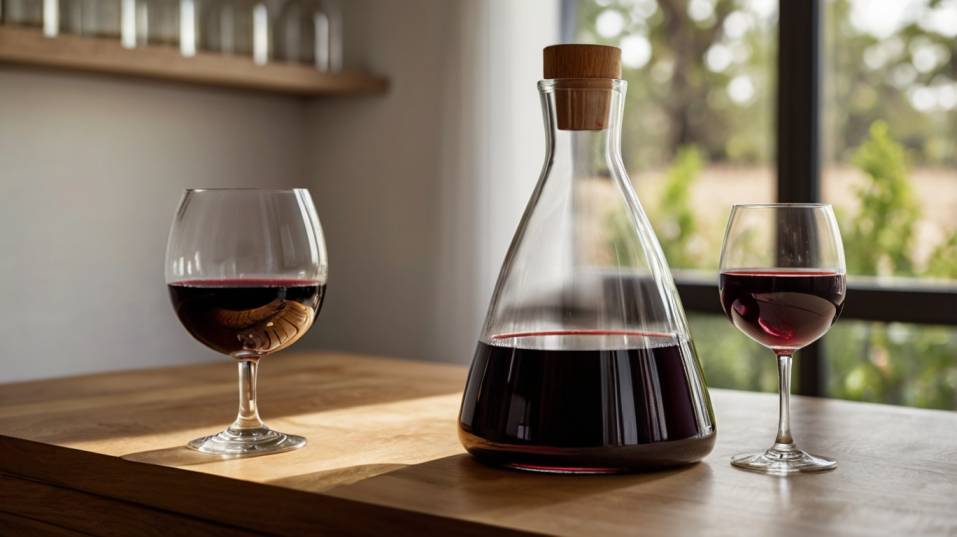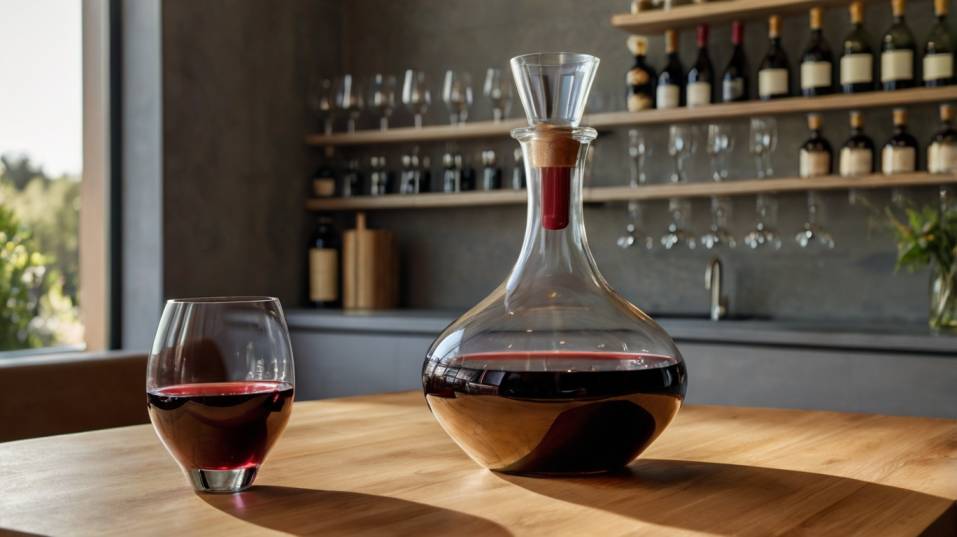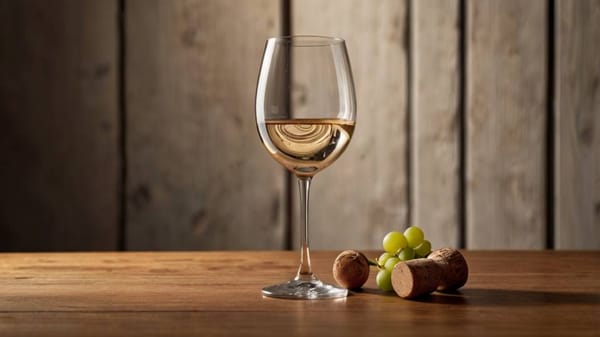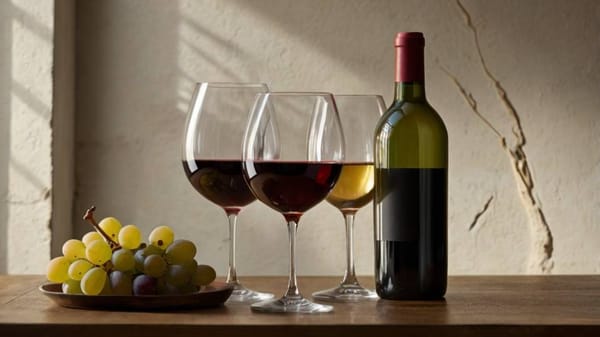The Truth About Decanting: When It Helps (and When It Doesn’t)
Discover when decanting improves your wine—and when it doesn’t. Learn how to taste, pour, and collect with confidence, not guesswork.

Ever wondered if decanting really makes a difference—or if it’s just wine theater? For beginners especially, it can feel like a mysterious ritual.
But the truth is simpler: decanting helps some wines shine, while it dulls others. Knowing when to use it is less about tradition and more about intention.
This guide cuts through the confusion so you can pour with purpose—and taste the difference with confidence.
What Decanting Really Does
At its core, decanting serves two purposes: aeration and separation. Aeration is the more commonly understood benefit. When wine is poured into a decanter, it’s exposed to oxygen.
That oxygen begins to interact with the wine’s volatile compounds, softening tannins and coaxing aromas out of hiding.
This is especially useful for young, tightly wound wines—wines that smell closed or taste rigid right out of the bottle. A little time in a decanter can make them feel more expressive, more integrated, and frankly, more enjoyable.
Separation, on the other hand, is more physical than chemical. Older wines—especially reds with a decade or more of age—can throw sediment.
This sediment is harmless but bitter, and it can muddy both the texture and the finish of the wine. Decanting allows you to pour off the clear wine, leaving the sediment behind in the bottle.
But not all wines need air. And not all wines have sediment. Decanting works best when there’s a reason behind it.
When Decanting Helps
Here’s the key: decanting works for the wine, not against it. When used thoughtfully, it can elevate a bottle in three distinct ways:

Young Reds with Strong Structure
Many bold, age-worthy red wines—like Barolo, Bordeaux, Syrah, or young Napa Cabernet—start out firm, tight, and tannic. These wines are built to last, which means they often show restraint in their early years.
Decanting helps soften those structural elements, especially the mouth-drying grip of tannins. It gives the wine room to unfold, revealing more aroma, more texture, and better balance.
You might start to notice how the once-muted dark fruit becomes juicier. Spice and earth might step forward. What seemed angular in the first sip becomes smoother and more rounded with time in the glass.
Aromatically Closed or “Shy” Wines
Some wines—regardless of age—can seem quiet or one-dimensional when first opened. This is often due to reduction (a condition where the wine has been deprived of oxygen during aging or bottling).
Decanting gives these wines a chance to release those reductive compounds and reintroduce freshness. White wines can fall into this camp too.
High-quality white Burgundy, aged Riesling, or white Rhône blends sometimes arrive with a funky, sulfuric edge that isn’t permanent—it just needs to breathe.
A brief decant can lift that veil and reveal what’s underneath: minerality, stone fruit, spice, or floral notes you couldn’t smell before.
Wines in a Transitional Phase
Some wines, especially those in their middle years of aging (say 5–10 years), benefit from a short decant to help them fully express themselves.
They’re no longer tight and youthful, but not yet fragile. A little air can help bridge that gap, smoothing over awkward edges and opening up a more nuanced, harmonious experience.
When Decanting Doesn’t Help—and Might Even Hurt
Contrary to what you might see at restaurants or in wine TikTok videos, not every bottle should be decanted. In fact, some wines are best enjoyed directly from the bottle with as little oxygen exposure as possible.
Delicate, Aged Wines
Older wines—particularly reds that are 15 to 20 years or more—can be surprisingly fragile. While they may contain sediment worth separating, they don’t always respond well to prolonged air exposure.
Their structure may have softened with age, their flavors fully integrated. Too much oxygen at once can cause them to collapse within minutes, leaving you with something flat or hollow just when it’s hitting its peak.
If you’re opening a wine of this age, decant only to remove sediment, and pour gently. Taste often and serve soon after.
Crisp, Youthful Whites and Rosés
Wines that thrive on freshness—like Sauvignon Blanc, Pinot Grigio, Albariño, or most rosés—don’t benefit from decanting.
These wines are all about clarity, acidity, and snap. Exposing them to extra oxygen won’t enhance their charm; in fact, it can dull the very characteristics that make them compelling.
Same goes for sparkling wines. While there are rare exceptions (like vintage Champagne with years of bottle age), most bubbles are best served directly from the bottle, where the pressure helps preserve brightness and fizz.
Simple, Everyday Wines
If a wine is meant to be enjoyed casually, easily, and without much fuss, don’t overthink it.
Decanting won’t elevate a basic table red or a fruit-forward blend into something it’s not. Instead, focus on proper temperature, a clean glass, and a moment to savor.
How to Decant with Intention
There’s no single formula for how long to decant a wine, because every bottle reacts differently. But there is a method that helps you learn from the process: taste as you go.
Open the wine and pour a small glass right away. Smell it. Taste it. Ask yourself: is it closed? Is it harsh? Is it expressive but a bit tight?
Then decant the rest and check back in 15 to 30 minutes. You’ll start to notice what oxygen is doing to the wine—how aromas expand, how tannins soften, how structure shifts. This is the best way to build your own sense of timing.
Some wines hit their stride after 15 minutes. Others keep improving for an hour or more. And a few start fading fast. That’s part of the discovery.
As for decanters, you don’t need anything fancy. A wide-based glass vessel works well for younger wines.
For older bottles, a slimmer carafe helps limit overexposure. Just keep it clean, dry, and scent-free. (Avoid using dish soap—hot water and a good rinse are enough.)
Final Thoughts
Decanting is not about looking impressive. It’s about making wine taste the way it’s meant to. It sharpens your senses, trains your palate, and gives you more control over the experience in the glass.
When used thoughtfully, decanting can transform a wine from something stiff and unapproachable to something layered, expressive, and memorable. When used without purpose, it can dull a wine’s energy—or worse, rush it past its peak.
So next time you open a bottle, don’t reach for the decanter out of habit. Taste first. Listen to what the wine needs. Then act with confidence.
Try it this week: open a structured young red, pour half into a decanter and keep the rest in the bottle. Taste both after 20 minutes. Feel the difference.
Notice what changes—and what doesn’t. That’s how you sharpen your palate. That’s how you learn what truly makes a wine shine.




